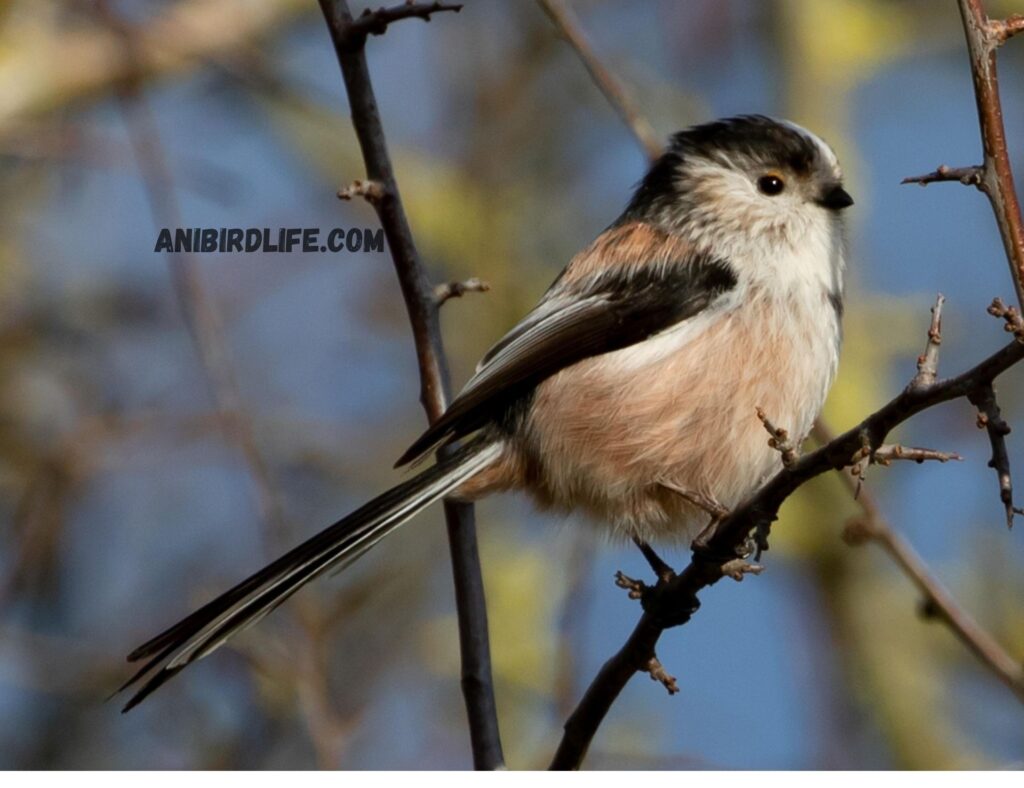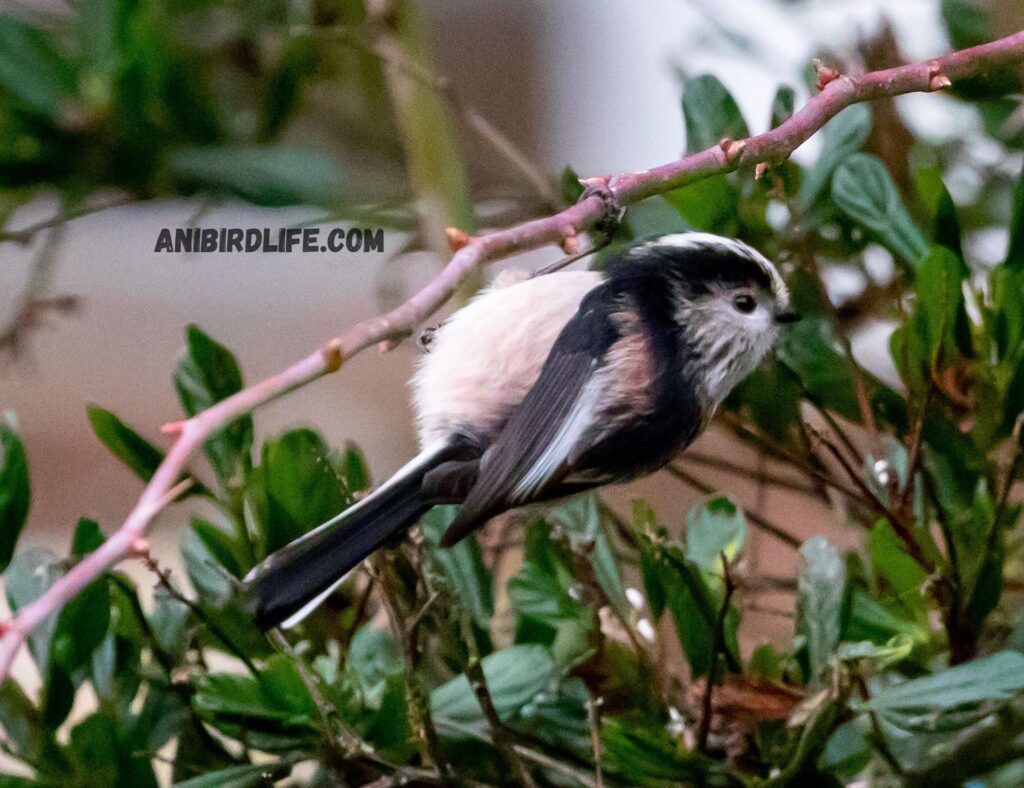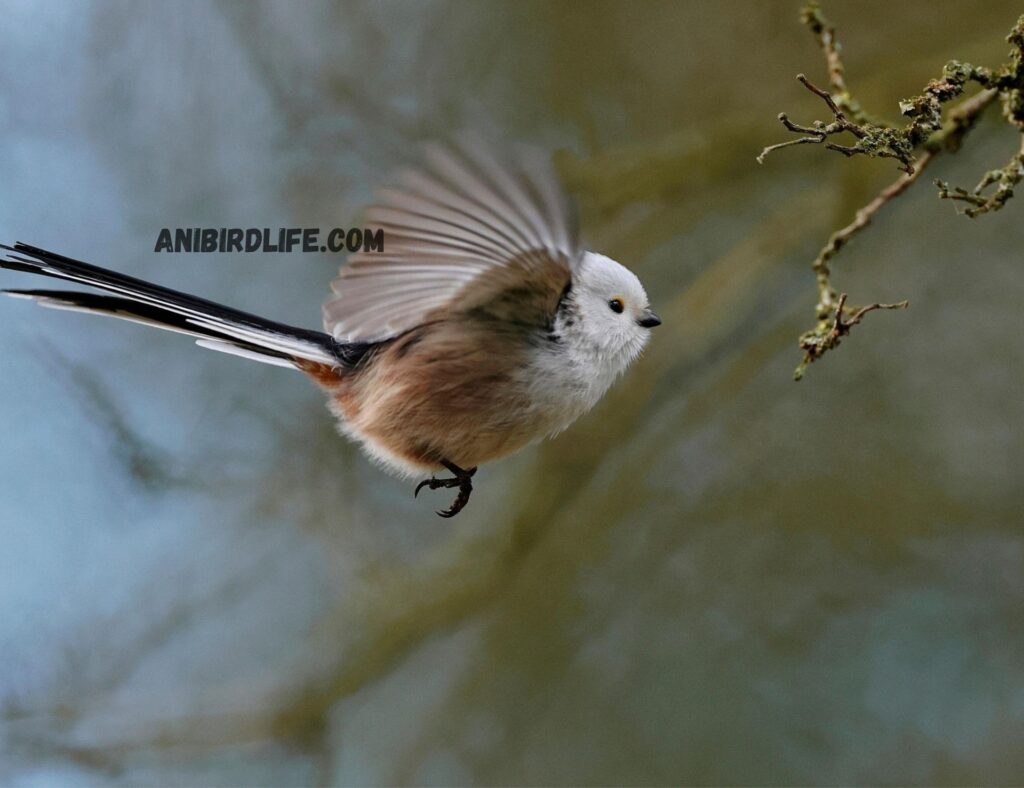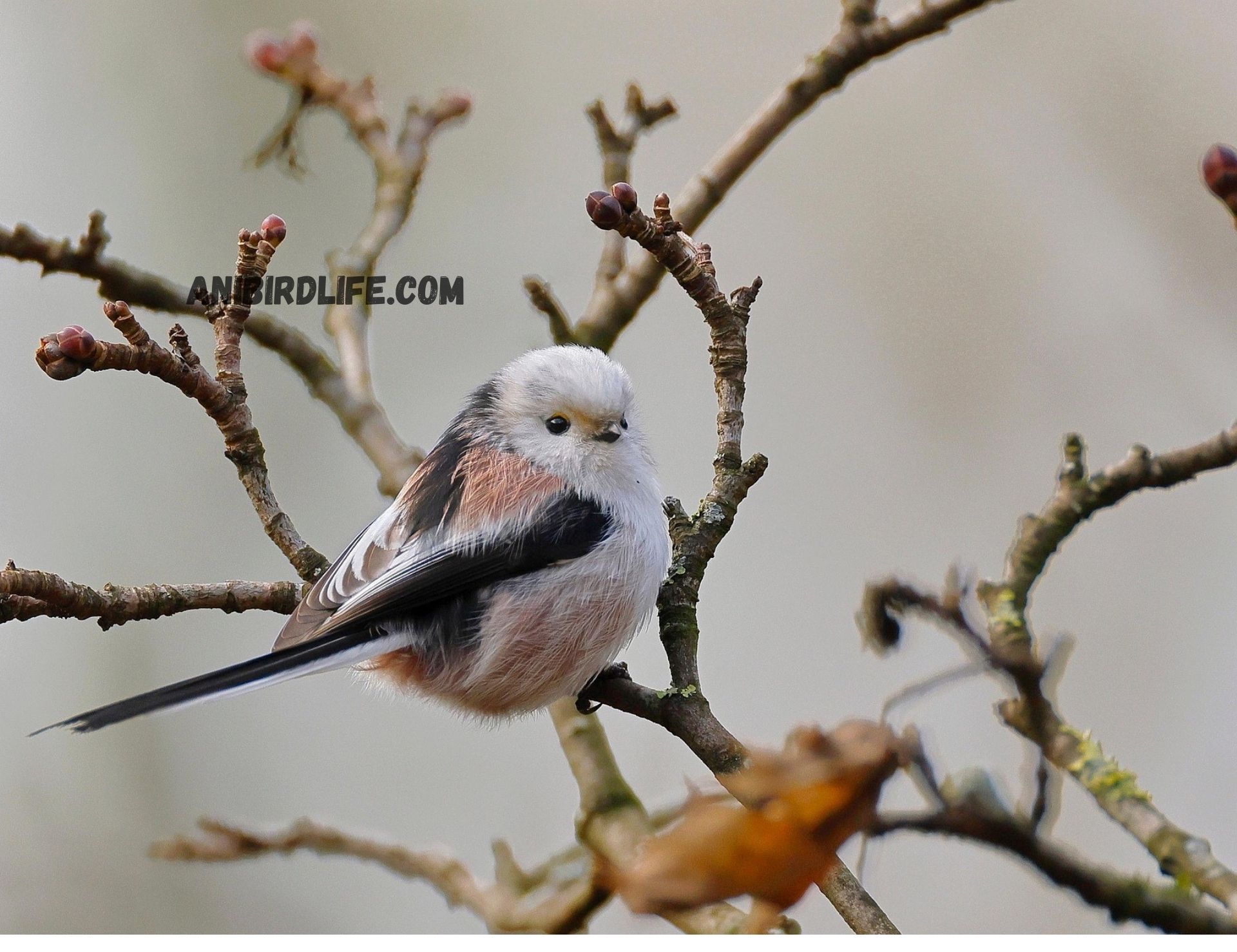One of nature’s most captivating small birds is the Long-tailed Tit (Aegithalos caudatus). The fluffy feathers, small size, and disproportionately long tail make this bird a favorite among nature lovers and birdwatchers. This is a hardy and gregarious animal that thrives in a range of environments throughout Europe and Asia, despite its delicate look.
In addition to providing answers to some commonly asked concerns, this page will examine the distinctive traits, habits, and ecological significance of this endearing bird. Identification and Appearance
Because of its unique characteristics, the Long-tailed Tit is easily recognized. This bird, which is only 13 to 15 cm long, more than half of which is made up of its tail, is a study of grace and accuracy.
It has a rounder appearance because of the soft, fluffy feathers covering its body. Black, white, and pinkish-brown make up the majority of the plumage, with minor differences based on the subspecies and geographic location.
The Long-tailed Tit’s tail, which is longer than its body, is one of its most remarkable features. This tail is essential to the bird’s balance as it darts through thickets; it is not merely ornamental. Its tiny, stubby beak is ideal for snatching spiders and insects from twigs and leaves.
Distribution and Habitat
Widely distributed throughout Europe and Asia, long-tailed tits live in hedgerows, gardens, shrublands, and forests. They especially like places with a lot of greenery since it gives them food and shelter. As long as there is enough cover and food available, these incredibly adaptive birds can live in both rural and urban settings.
To increase their chances of surviving the winter, Long-tailed Tits frequently join flocks with other tiny birds, such tits and warblers. Their ability to adapt and think on their feet is demonstrated by their social behavior.

Nutrition and Foraging Practices
Primarily an insectivore, they consume spiders, tiny insects, and their eggs. They might also eat berries and seeds in the winter when insects are less common. They acrobatically flutter from branch to branch, frequently hanging upside down to get their meal, making their foraging technique an amazing sight to witness.
Being extremely effective foragers, these birds frequently cooperate in small groups to find food. Their feeding behaviors reflect their social character, as they regularly tell other flock members about food sources.
Habits of Breeding and Nesting
Early spring usually marks the start of the Long-tailed Tits’ breeding season. They are cooperative breeders, which means that non-breeding individuals frequently assist in raising the offspring of a dominant pair, in contrast to many other bird species. This behavior improves the chicks’ chances of surviving and fortifies social ties within the group.
Their elaborate nests are frequently referred to as avian architectural wonders. The camouflaged nests, which are made of moss, lichen, and spider silk, mix in perfectly with their natural habitat. Feathers line the inside, giving the eggs and chicks a cozy and comfortable habitat.
Eight to twelve eggs make up a typical clutch, which the female incubates for roughly two weeks.
Eight to twelve eggs make up a typical clutch, which the female incubates for roughly two weeks. Both parents and their assistants feed the chicks after they hatch, and after about eighteen days, they fledge.
Communication and Social Structure
Throughout the year, they live in close-knit family groups and are very gregarious birds. They frequently have flocks of up to 20 people, many of whom are family members. Through a range of vocalizations and physical interactions, this social structure is preserved.
Their beautiful, high-pitched calls are frequently characterized as a sequence of gentle “tsi-tsi” or “see-see” noises. When foraging in dense terrain, these sounds help to keep the flock together.

The Significance of the Environment
Because they are insectivores, Long-tailed Tits are essential for managing insect populations, especially those of pests that harm gardens and crops. Because they flourish in regions with high biodiversity, their existence is frequently a sign of a healthy ecology.
Their cooperative breeding style also offers important insights about how birds’ sociality has evolved. Scientists can learn more about the advantages of communal living and shared parental care by studying Long-tailed Tits.
Conservation and Threats
Despite not being threatened at the moment, long-tailed tits face a number of difficulties, such as habitat loss and climate change. They have fewer places to nest and forage when woodlands and hedgerows are destroyed, and severe winters can result in high mortality rates because of a lack of food.
The existence of this charming species can be ensured by conservation initiatives aimed at protecting natural habitats and establishing bird-friendly surroundings. By planting native trees and bushes, gardeners can help Long-tailed Tits and other wildlife by giving them food and shelter.

FAQs
1. How does one describe a long-tailed tit?
A little, fluffy bird with a characteristically long tail is the Long-tailed Tit. It has a spherical body, a small beak, and feathers that are pinkish-brown, white, and black.
Where are Long-tailed Tits found?
Both Europe and Asia are home to long-tailed tits, which can be found in hedgerows, gardens, and woodlands. Especially in the winter, flocks of them are frequently sighted.
What is the diet of Long-tailed Tits?
The primary foods they eat are insects, spiders, and their eggs. They might also consume berries and seeds in the winter.
How are nests constructed by Long-tailed Tits?
Their nests are lined with feathers and constructed from spider silk, lichen, and moss. In order to blend in with their environment, they are frequently camouflaged.
Do Long-tailed Tits interact with others?
Indeed, Long-tailed Tits live in family groupings and are very gregarious. During the winter, they frequently gather in flocks with other tiny birds.
Do Tits with long tails migrate?
No, although they may relocate locally in search of food during severe winters, long-tailed tits are mostly non-migratory.
What is the lifespan of Long-tailed Tits?
Although some may live longer, Long-tailed Tits typically live between two and three years.
Do Long-tailed Tits face extinction?
No, at this time, Long-tailed Tits are not listed as endangered. However, habitat loss and climate change pose hazards to them.
What are some ways to get Long-tailed Tits to visit my garden?
Long-tailed Tits can be drawn to your garden by planting native trees and bushes, making dense vegetation, and offering bird feeders with seeds and suet.
What is the ecological significance of long-tailed tits?
They act as markers of a thriving ecosystem and aid in the management of insect populations. Additionally, their cooperative breeding style sheds light on bird sociality.
In conclusion
A genuine treasure of the bird kingdom, the Long-tailed Tit combines social intricacy, resilience, and delicate beauty. These birds provide an intriguing window into the wonders of nature, from their elaborate nests to their cooperative breeding practices.
We can take action to save the Long-tailed Tit and the environments it lives in by learning about and respecting this species. The Long-tailed Tit’s elegance and charm will win your heart whether you’re an experienced birdwatcher or a casual nature enthusiast.
